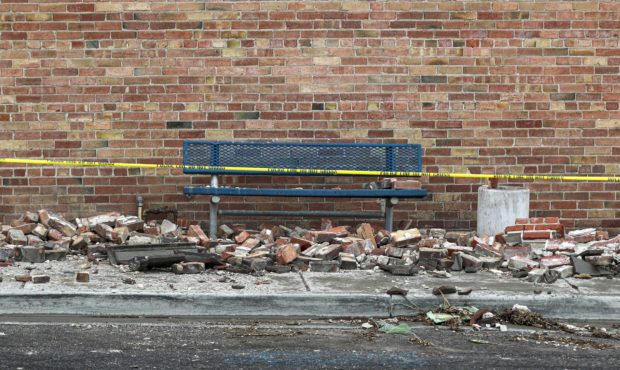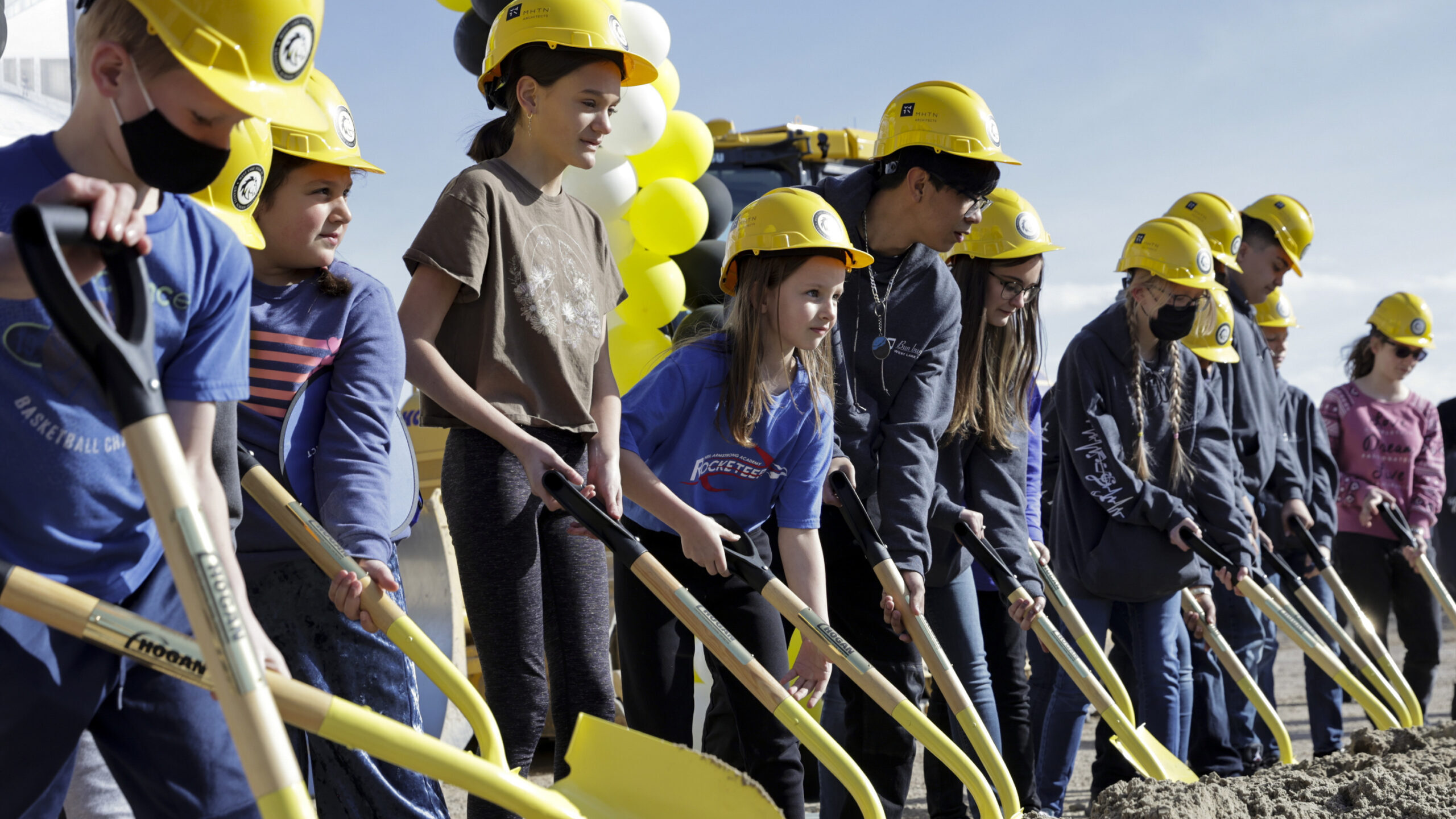How an earthquake impacts homes and buildings
Apr 18, 2024, 6:00 PM

FILE: Caution tape surrounds the VFW building on Magna’s Main Street on Tuesday, March 24, 2020, following a 5.7 magnitude earthquake that was centered near the city on March 18. (Steve Griffin, Deseret News)
(Steve Griffin, Deseret News)
SALT LAKE CITY — How does shaking and shifting ground during an earthquake damage or destroy the homes you live in? Or the buildings you work in?
Dave and Debbie broadcast live from Evergreen Junior High to discuss earthquake safety as Utahns participate Thursday in the Great Utah Shakeout.
Doug Hancock who is a structural engineer, joins the show to discuss how earthquakes can impact homes and buildings.
Homes and buildings in earthquakes
He said wood-frame homes stand up to earthquakes because they flex and bend.
If your home was built before 1950, “you probably want to take a good look at it,” he said.
After 1950, check how well the home is connected to the foundation.
“But if your home was built after the 2000s, I would be perfectly comfortable in a home there because of the building codes that we were able to develop, again mostly from the Northridge quake.”
Watch out for homes or buildings built with unreinforced masonry or brick and lacking steel support of rebar.
“That’s what really causes the catastrophic failures you see those in in countries like turkey and Andy that’s where so many of the unfortunate deaths come from
Earthquakes and building codes
Hancock said modern seismic design began after the 1906 earthquake in San Francisco.
Every year on this day (April 18), a moment of silence is observed at 5:11 a.m. at Lotta’s Fountain on Market Street to remember the more than 3,000 people who died in the 7.8-magnitude quake. Hundreds of thousands lost their homes, as reported by abc7News.

The 1933 Long Beach Earthquake killed approximately 115 people and injured over 1,000. abc7News
“We really started to think about how we could better design our buildings,” Hancock said, “and it didn’t take off right away until 1933. They had a Long Beach Quake that really got the design rock and rolling, so to speak.”
The 6.4-magnitude earthquake took place March 10 at 5:54 p.m. south of downtown Los Angeles. Damage to buildings was widespread throughout Southern California. It resulted in 115 to 120 fatalities and an estimated $40 million worth of property damage, equivalent to $941 million in 2023. The majority of the fatalities resulted from people running out of buildings exposing themselves to the falling debris.
“From those twin earthquakes, the Unified Building Code was born,” Hancock said.
“By the 1950s, we were starting to build our structures by that code, and it didn’t take long to find out that concrete and brick and masonry buildings, they don’t do too well in earthquakes” if builders don’t reinforce them with rebar, he said.
“If we have to tear down a building after an earthquake, but everyone survived, we call that a win,”
Doug Hancock, structural engineer
There is no such thing as a earthquake-proof building, Hancock said, but engineers are creating strong earthquake-resistant structures.
After the 6.7-magnitude Northridge earthquake struck the Los Angeles region in 1994, lawmakers made significant changes to the building code. “From about 1995 to 2000, those building codes really improved our ability to to keep a building up,” Hancock said.
For an engineer, the number one goal is to keep a building standing until the people inside get out, he added.
Related:
Higher-magnitude earthquake is coming to Utah, warns expert
Great Utah ShakeOut: State’s largest earthquake drill happens today
Dave & Dujanovic can be heard weekdays from 9 a.m. to noon. on KSL NewsRadio. Users can find the show on the KSL NewsRadio website and app, as well as Apple Podcasts and Google Play













